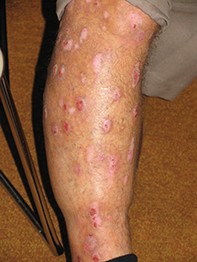Peer Reviewed
Feature Article Dermatology
Pruritus: an approach to diagnosis and management
Abstract
Pruritus is a common presenting symptom in primary care medicine that can prove distressing to the patient and frustrating for the treating doctor. Here is a practical approach to the diagnosis of its causes and its management, including a discussion of some less familiar conditions in which pruritus is a feature.
Key Points
- It is important to distinguish pruritus with a rash from that without; pruritus without a rash suggests a systemic cause for the itch.
- If a systemic cause for pruritus is suspected, limited investigations are warranted.
- Attention to general skin care principles is essential for patients with pruritus.
- If possible, provide patients with written instructions of skin care and keep regimens reasonably simple.
- Topical corticosteroids are only helpful in treating the underlying disease in patients with inflammatory dermatoses.
- Oral treatments for pruritus, including antihistamines, tricyclic antidepressants, benzodiazepines and opioid receptor antagonists, may offer relief in specific circumstances.
- Pruritus is a feature of the following less familiar conditions: lichen simplex chronicus, prurigo nodularis, Grover’s disease, brachioradial pruritus, notalgia paraesthetica and urticarial dermatosis.
Purchase the PDF version of this article
Already a subscriber? Login here.

